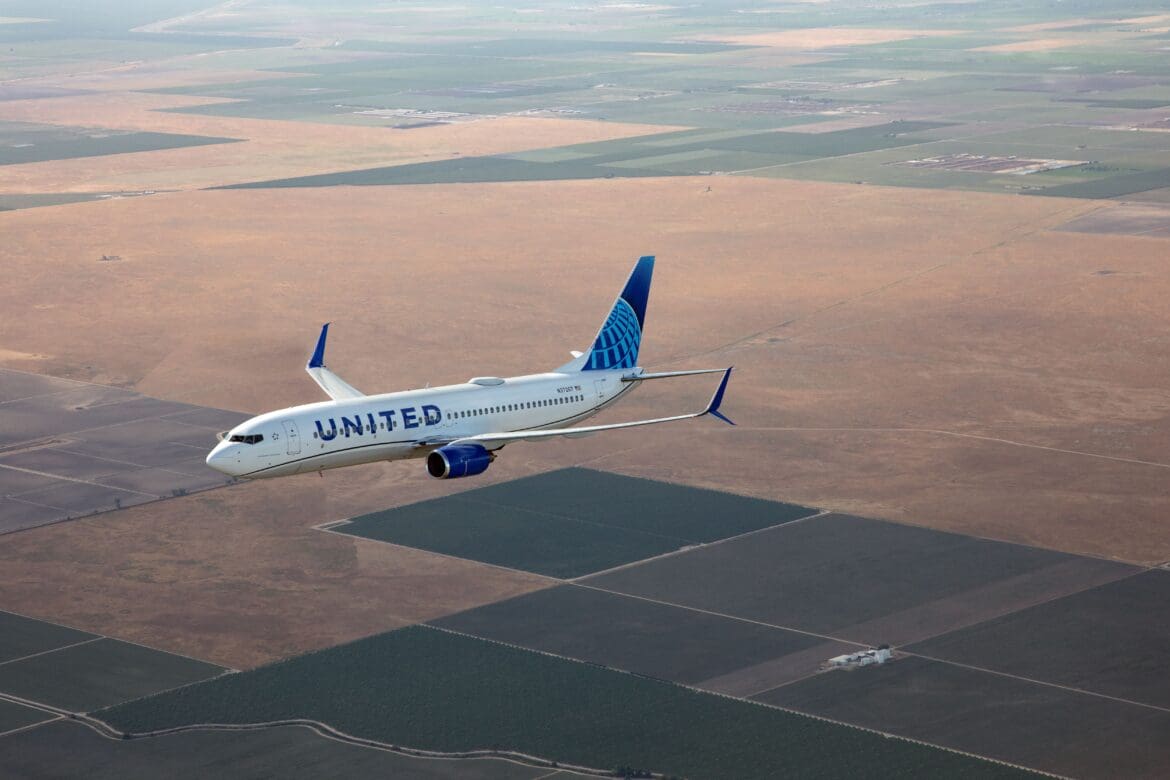Advertiser & Editorial Disclosure: The Bulkhead Seat earns an affiliate commission for anyone approved through the links below. This compensation may impact how and where links appear on this site. We work to provide the best publicly available offers to our readers. We frequently update them, but this site does not include all available offers. Opinions, reviews, analyses & recommendations are the author’s alone, and have not been reviewed, endorsed, or approved by any of these entities.
Three separate incidents occurred on United Airlines over the past month that could continue to shine a light on issues with aircraft manufactured by beleaguered Boeing. The rudder pedals became stuck when pilots tried to land last month and on Monday another United plane had engine issues during climb out. Yesterday, a Boeing 777 lost a tire after taking off and crushed cars parked below it. These incidents were unrelated, but scary nonetheless.
Stuck Rudder Pedals When Landing
A United Airlines Boeing 737 MAX 8 saw its rudder pedals get briefly stuck last month as the pilots tried to land at Newark Liberty International Airport (EWR) last month. I wasn’t sure what these were, so I looked them up. California Aeronautical University provided this definition:
The rudder controls the yaw or the direction of the airplane to the left and right. The pedals control the trailing edge of the airplane’s vertical stabilizer. In most small airplanes, rudder pedals also control the wheel brakes when the pilot pushes on the top part of the pedals.”
These pedals are found near the pilots’ feet and are used during landing. Reuters is reporting that on February 6th, United Airlines flight UA1539 was arriving from Nassau’s Lynden Pindling International Airport (NAS) when the rudder pedals became temporarily stuck. Luckily, they became usable again shortly after and the plane landed without incident. The aircraft was pulled from service for further testing and engineers managed to duplicate the stuck rudder pedals. The National Transportation Safety Board (NTSB) is investigating the issue. Collins Aerospace manufactures the rudder control system and is aiding NTSB investigators. One theory is that cold temperatures might have caused the issue.
[it worked with United] to diagnose the rudder response issue observed during two 737-8 flights in early February. With coordination with United, the issue was successfully resolved with the replacement of three parts and the airplane returned to service last month.”
A United plane was forced to turn back shortly after takeoff when an engine caught fire in the air. Passengers recorded the flames shooting out of the engine. pic.twitter.com/gnSw9Q5wxA
— AccuWeather (@accuweather) March 7, 2024
Engine Flame Out on Departure
United Airlines flight UA1118 from Houston’s George Bush Intercontinental Airport (IAH) to Southwest Florida International Airport (RSW) gave passengers a terrifying show when its left engine started shooting out bright orange flames. NBC News reports that the Boeing 737-900 had an engine issue that United and the Federal Aviation Administration (FAA) are speculating the flames were caused by a compressor stall. Compressor stalls can be caused by foreign objects like bird strikes or a dirty compressor component. They do not pose serious risk to the plane, but pilots should land as quickly as possible after an incident.
Passenger Elliot Trexler described the incident in an interview on NBC’s TODAY show:
This was a loud explosion. There was no question in any of our minds that something bad had happened. That combined with the plane nosediving and seeing the flames.”
This incident also occurred without injuries and the aircraft returned around 35 minutes after departure.
BREAKING: United Airlines Boeing 777 loses tire while taking off from San Francisco, crushing cars on the ground pic.twitter.com/uXpHuFdzul
— BNO News (@BNONews) March 7, 2024
Falling Tires
CBS News reports that a Boeing 777-200 took off from San Francisco International Airport (SFO) yesterday and lost a tire moments later. It fell to the ground and crushed some cars that were in its path. United Airlines flight UA35 was bound for Osaka’s Kansai International Airport (KIX). All 249 people onboard arrived safely at Los Angeles International Airport (LAX) after the aircraft diverted there. A new aircraft was dispatched to take the passengers to Osaka and the FAA is investigating what caused the tire to fall off.
Anthony’s Take: Boeing can’t catch a break and all of these issues have to make one wonder what exactly is going on with the aircraft manufacturer. Thankfully, in both incidents the aircraft were able to land without issue.
(Featured Image Credit: United Airlines.)
User Generated Content Disclosure: The Bulkhead Seat encourages constructive discussions, comments, and questions. Responses are not provided by or commissioned by any bank advertisers. These responses have not been reviewed, approved, or endorsed by the bank advertiser. It is not the responsibility of the bank advertiser to respond to comments.
Advertiser & Editorial Disclosure: The Bulkhead Seat earns an affiliate commission for anyone approved through the links above This compensation may impact how and where links appear on this site. We work to provide the best publicly available offers to our readers. We frequently update them, but this site does not include all available offers. Opinions, reviews, analyses & recommendations are the author’s alone, and have not been reviewed, endorsed, or approved by any of these entities.
